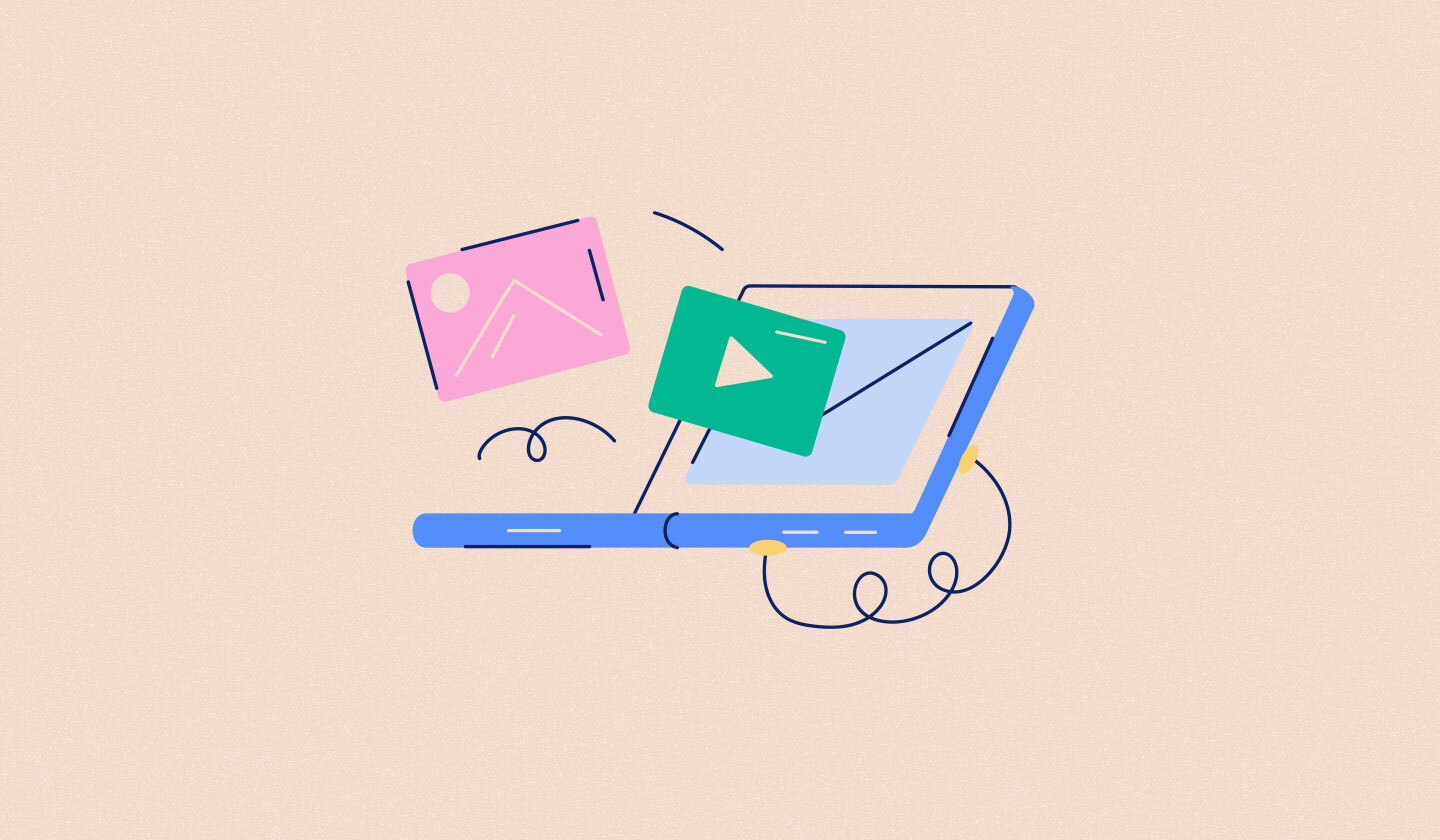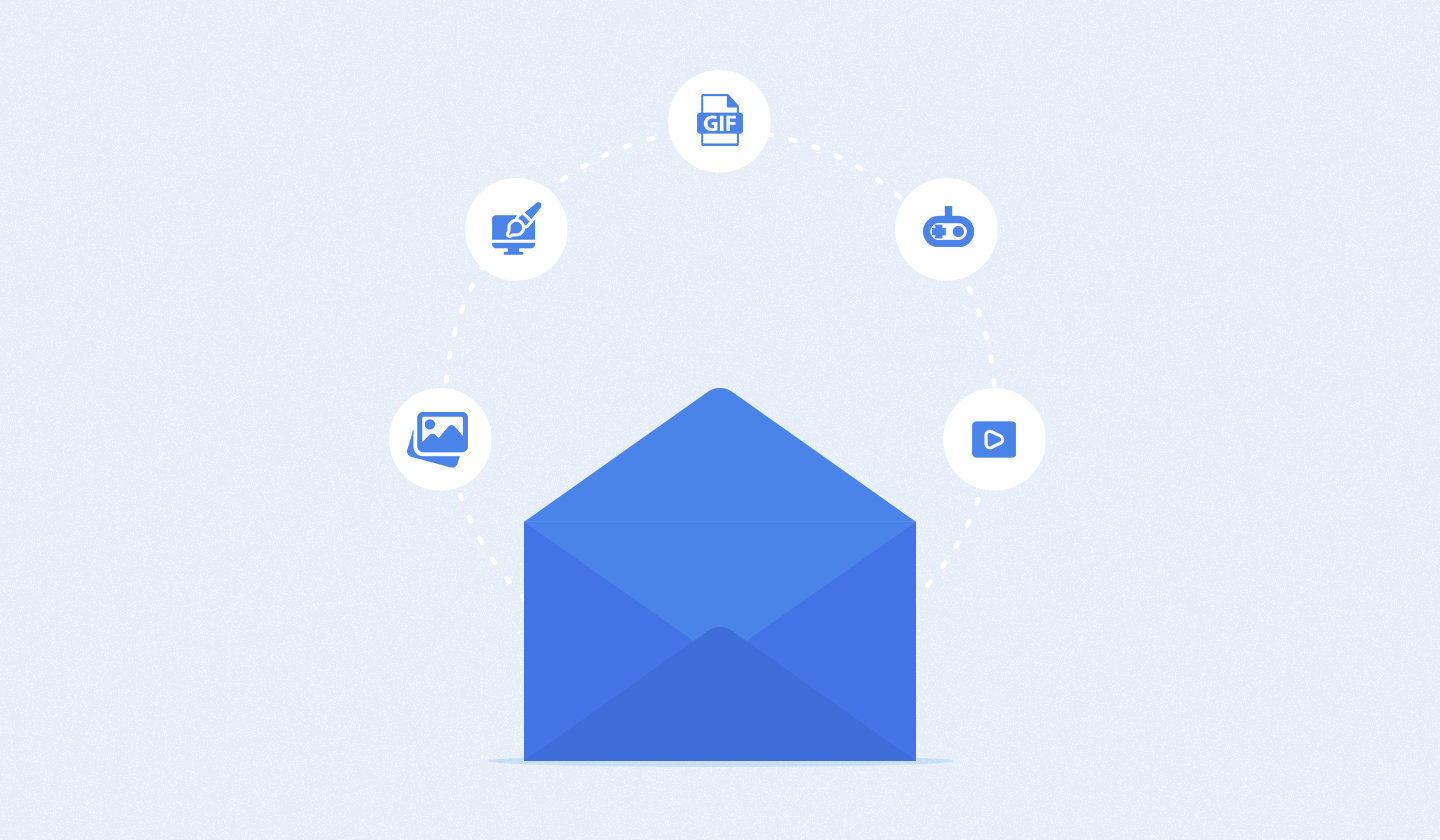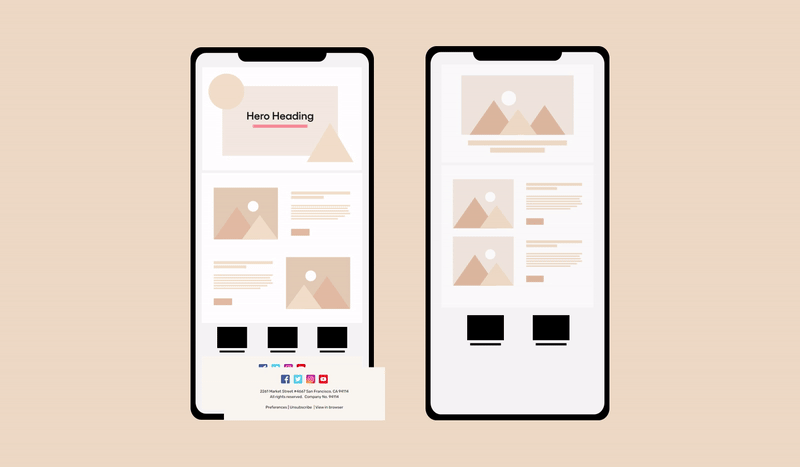Email bounce rate can be a bit of a mystery. You know you need to keep it low, but you may be unsure how to go about doing that.
Not having a low bounce rate can adversely affect your email deliverability, which is why you can’t overlook it and go about your day. Instead, you need to work on improving it to ensure that your emails are getting delivered to the right place.
Let’s begin by decoding what email bounce rate is and how to reduce it.
What Is Email Bounce Rate?
The percentage of emails that can't be delivered to your recipient's inbox is called the email bounce rate.

There’s a simple formula to calculate your email bounce rate.
(Number of bounces / number of delivered emails) x 100 = your email bounce rate
For example, if you’re sending a total number of 1,000 emails and 20 of them bounce, you’d need to calculate (20 / 1000) x 100, giving you a bounce rate of 2%.
The lower the email bounce rate, the better, as this means that your emails are actually landing where they should.
Types of Email Bounces You Should Know
Email bounces are categorized into two types, namely, soft email bounces and hard email bounces.
Soft email bounce
A soft email bounce refers to temporary delivery problems, meaning your recipient’s email address was valid, and your email reached their email server. However, it bounced back because your recipient’s inbox was full, your message was too large, or the recipient’s email server was temporarily down.
Hard email bounce
A hard bounce rate means permanent delivery problems. It happens when your email bounces back because your recipient’s email address is invalid or the domain name doesn’t exist. This means that your email won’t ever reach the recipient.
5 Major Reasons Why Emails Bounce
There are a number of reasons why your emails aren’t reaching your target audience. Below are some of the common reasons:
1. Invalid email address
Your emails will bounce back to you if your recipient’s email address is invalid or they no longer have access to it.
2. Inactive email address
The email account of your subscriber has been inactive for some time or deleted.
3. Slow/under maintenance email server
Either your recipient’s email server is blocking email delivery, or the email server is under maintenance.
4. Spammy content
Your email contains spammy content or elements which lead your email into the spam pit. For example, using too many images in your email.
5. Bad IP reputation
Your emails may not be delivered when you send them through an IP with a bad sender reputation.
What Is an Acceptable Bounce Rate?
After going through the definition, types, and reasons behind email bounces, it’s time to uncover what an acceptable email bounce rate is.

Less than 2% is considered an acceptable bounce rate for your emails. Anything above 2% is worthy of your attention, and you need to follow the below tactics to lower your email bounce rate.
7 Ways to Lower Your Email Bounce Rate
If you wish to get your email bounce rates down for optimal results, here are some ways to reduce your email bounces.
1. Clean your email list regularly
The email list plays a significant role in making or breaking your email marketing campaign. Having a list of contacts tainted with wrong or inactive email addresses will be a massive roadblock to your campaigns, causing bouncebacks and hurting your reputation in a major way.
Therefore, you need to tidy up your email list every now and then to keep your list healthy and active. You can begin by getting rid of inactive users. You can also run a campaign to ask them if they still want to receive your emails.
This way, you’ll only get soft bounces when your subscribers’ inboxes are full.
2. Segment your list
Segmenting your list might not earn you a scooby snack, but it can definitely up your email marketing campaign as it allows you to send more relevant content to your subscribers.
But where to start?
You can segment your audience based on engagement. For example, your most active users can be grouped together, and you can send them emails more frequently. Because they’ve shown interest in receiving your email content, your email engagement rates can go up the roof, proving beneficial for your overall email marketing campaign.
You can also try your luck to re-engage inactive users by sending them re-engagement emails, thus reducing your email bounce rate.
3. Ask for double opt-ins
If you’re struggling with a high percentage of hard bounces, using double opt-ins can significantly reduce them.

Requiring double opt-ins from your subscribers filters out passive prospects, bad emails, and spam accounts.
All you need to do is send an email authentication to every new subscriber and then add them to your email list once they’ve hit the subscribe button. For that, your initial confirmation email must be delivered to their inboxes, so you can ensure that their email address is correct and the email server is also working fine.
4. Make your email content engaging
Pay attention to your email content and ensure it's relevant and engaging. If people are interested in what you have to offer, your email bounce rate will decline automatically.
In short, focus on making your subject lines less boring. Plus, an email copy packed with text only won’t do much to grab your readers' attention. For this purpose, you must add videos, images, and GIFs along with the text to make your email’s content more engaging.
And Unlayer is here to help you with that, as its user-friendly drag and drop editor lets you add engaging content elements to your emails with much ease.
5. Regularly send emails
Show up in your subscribers’ inboxes consistently unless they live north of the Winterfell. Why? Because consistent contact with your subscribers is crucial for a successful email marketing strategy.
If you aren’t sending emails regularly, your email lists will likely go stale, resulting in engagement issues, spam complaints, and high email bounce rates.
So, you must send a welcome email to your recipients from the very start and engage with them over time by regularly sending relevant content.
Additionally, you can devise a particular email cadence to connect with your subscribers.
6. Avoid using free sender domains
There are a few key things you can do to help lower your email bounce rate. Make sure you're using reputable/professional sender domains.
Free email domains like Gmail or Yahoo can increase the chances of your emails being marked as spam, hurting your email sender's reputation and increasing bounce rates. Instead, use sender domains like hi@yourbusiness.com to verify that you’re a legitimate person working for a specific company.
7. A/B test your emails
A/B testing has much more to do with email marketing than you may think. When you test out the key elements like your subject lines, email copy, CTAs, etc., you simply have the edge over other brands.
You can split your subscribers into two groups and send them two different emails to see which one performs best. This way, you can measure and tweak what works to increase your subscriber engagement and reduce the overall bounce rate.
Conclusion
When overlooked, your email bounce rate can be detrimental to the success of your email marketing strategy.
So, you must focus on keeping it low by following the above tips and ultimately engaging your subscribers, so they’re interacting more actively with your emails.





